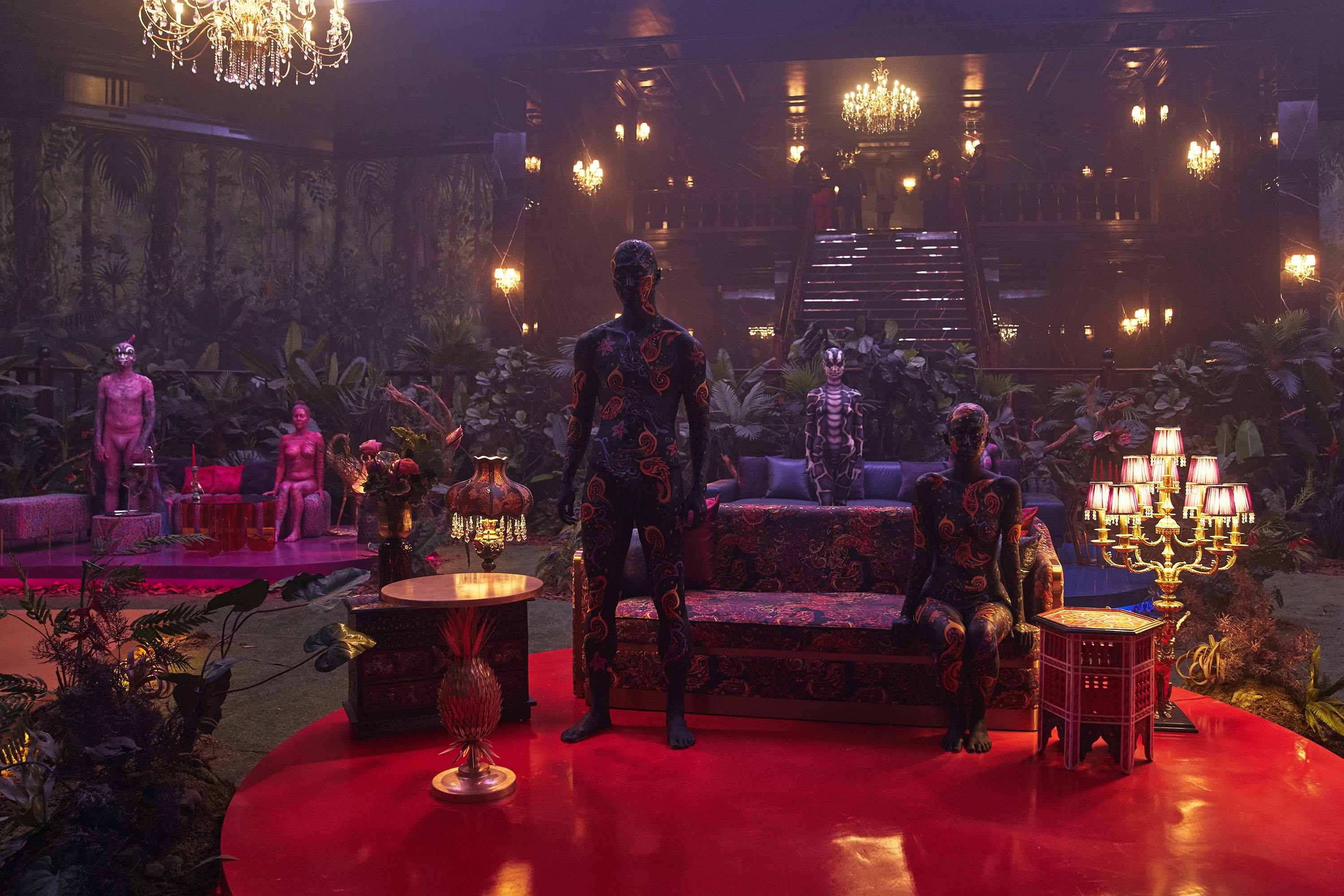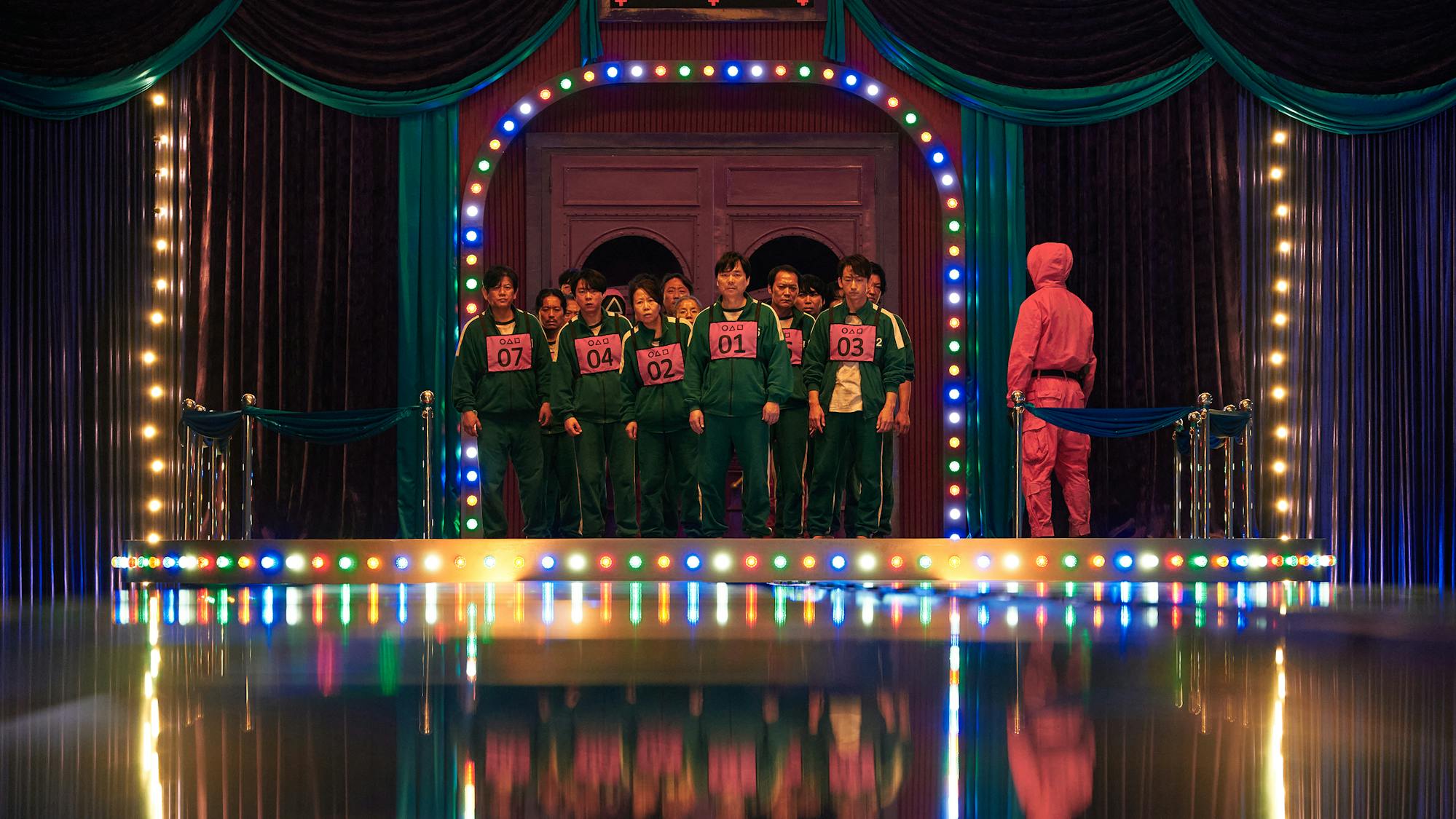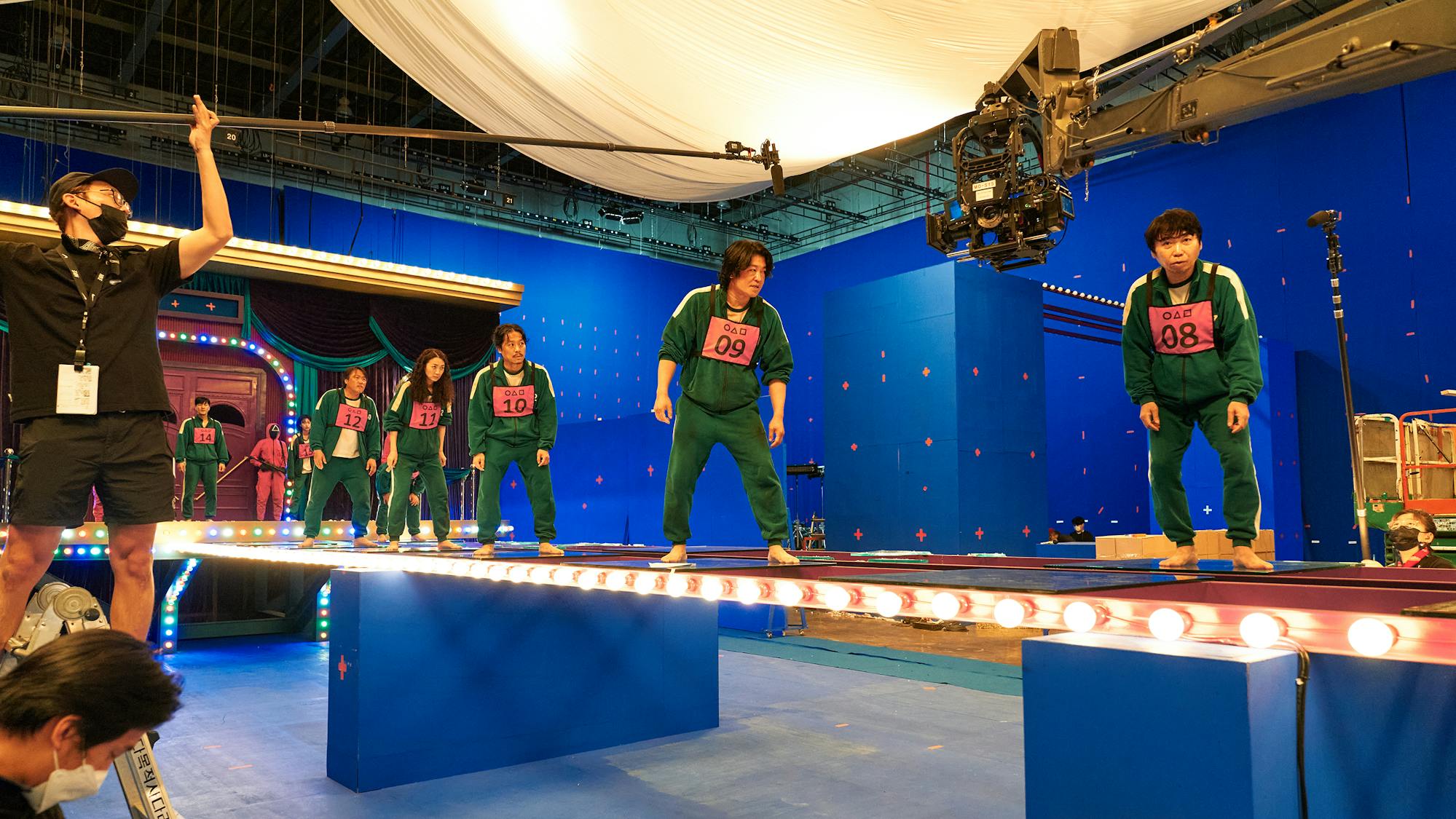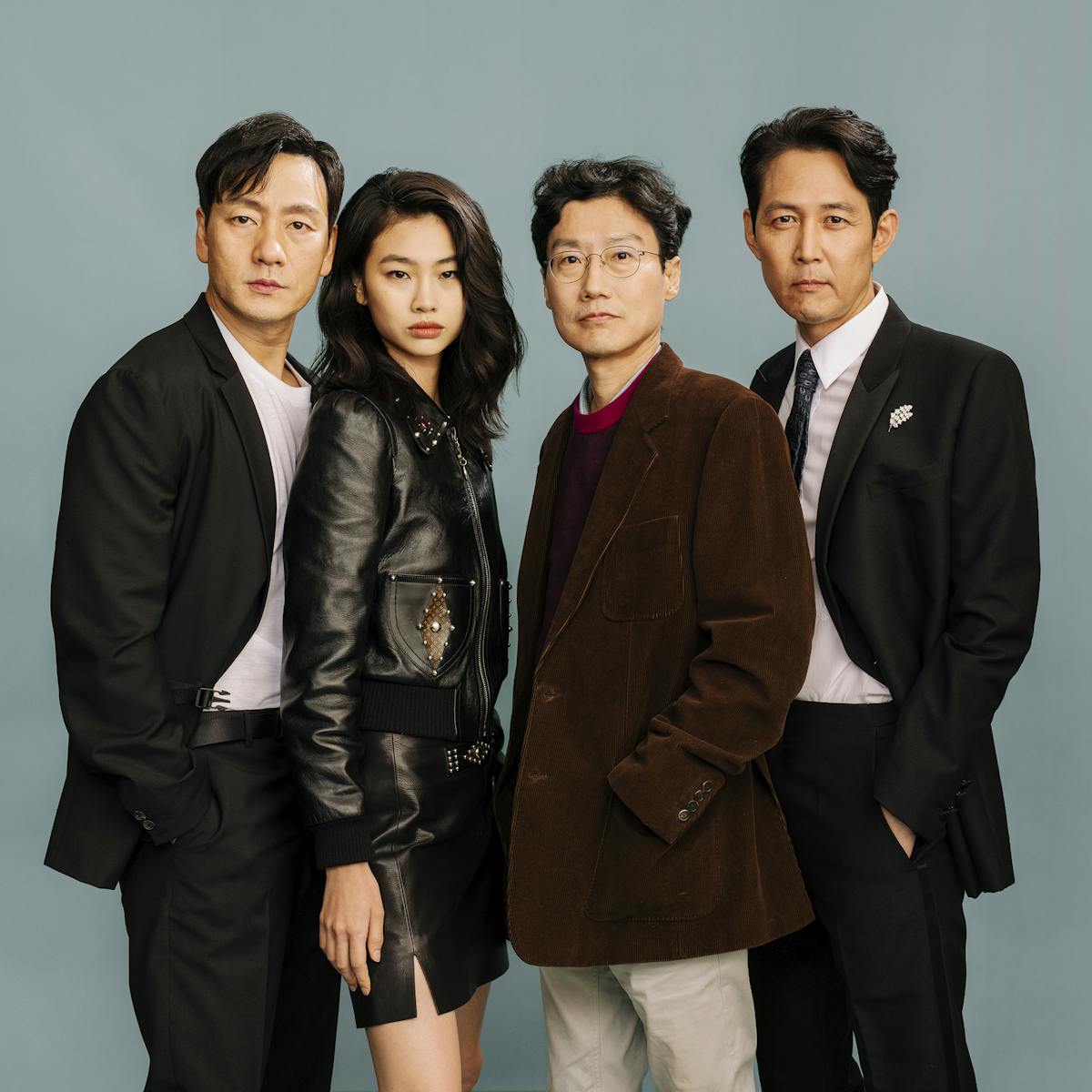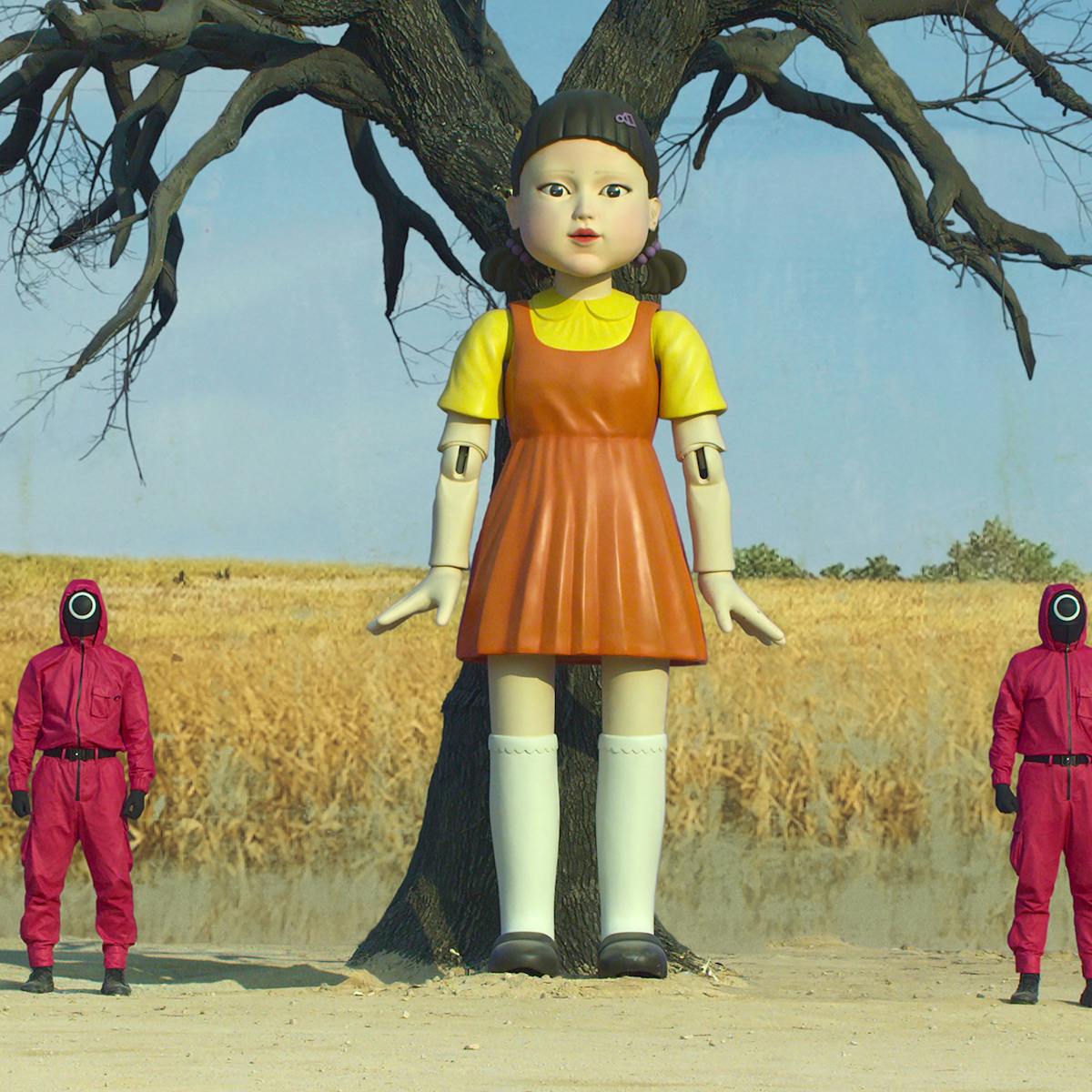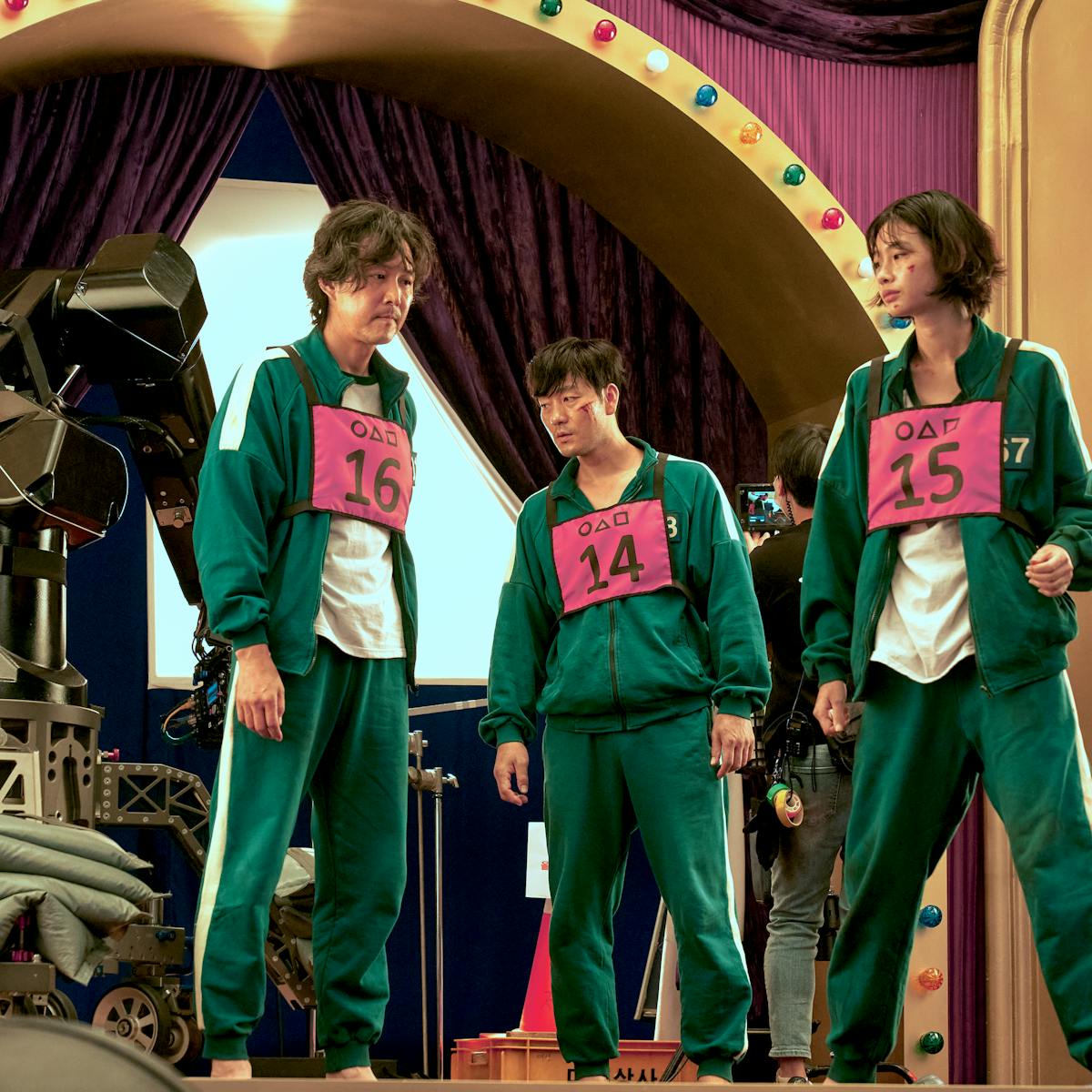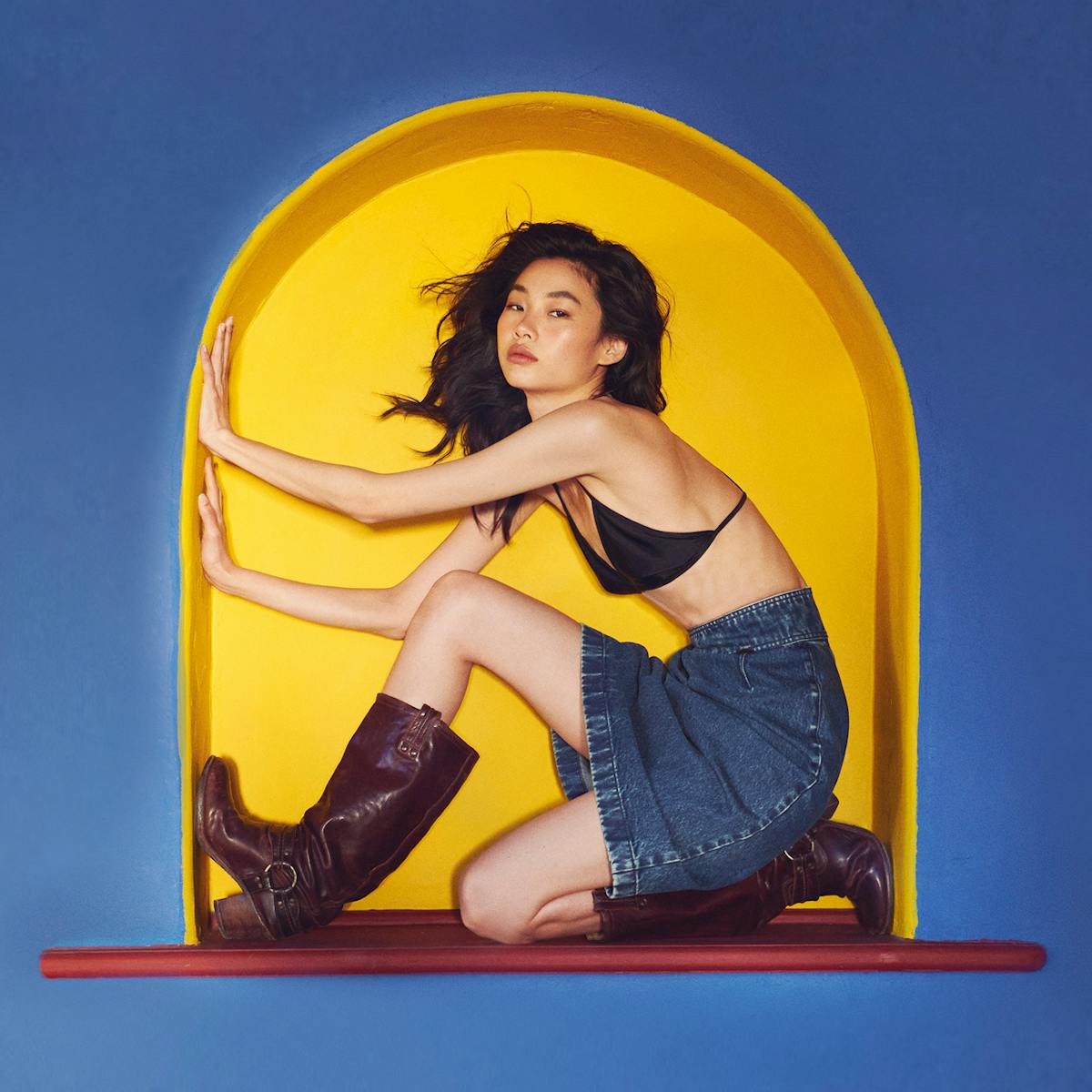The sights and sounds of V.I.P.s, the breakout episode of the hit series.
What would you do for 45.6 billion won? That’s the question at the center of writer-director Hwang Dong-hyuk’s Squid Game. In the show, 456 debt-ridden citizens are pitted against each other in a series of high-stakes children’s games. The rules are simple: All players must compete. Those who lose are killed; the one who makes it to the end wins a heaping pile of cash.
Yet, the innocence of it all — the playground sets where games are played, the ebullient music — makes the consequences all the more crushing. Through singular costume design, production design, sound, and visual effects, led by Cho Sang-kyung, Chae Kyoung-sun, Kang Hye-young, and Cheong Jai-hoon, respectively, the show has won the world over — it remains Netflix’s most-watched ever. These sights and sounds are seared into our collective memory, something that’s particularly evident in Episode 7, when V.I.P. guests are welcomed to witness the fifth game in person. “Nothing beats seeing it with your own eyes,” the lion-masked V.I.P. says as they all settle in to watch.
The Luxury of Silks & Satins
Costume Design
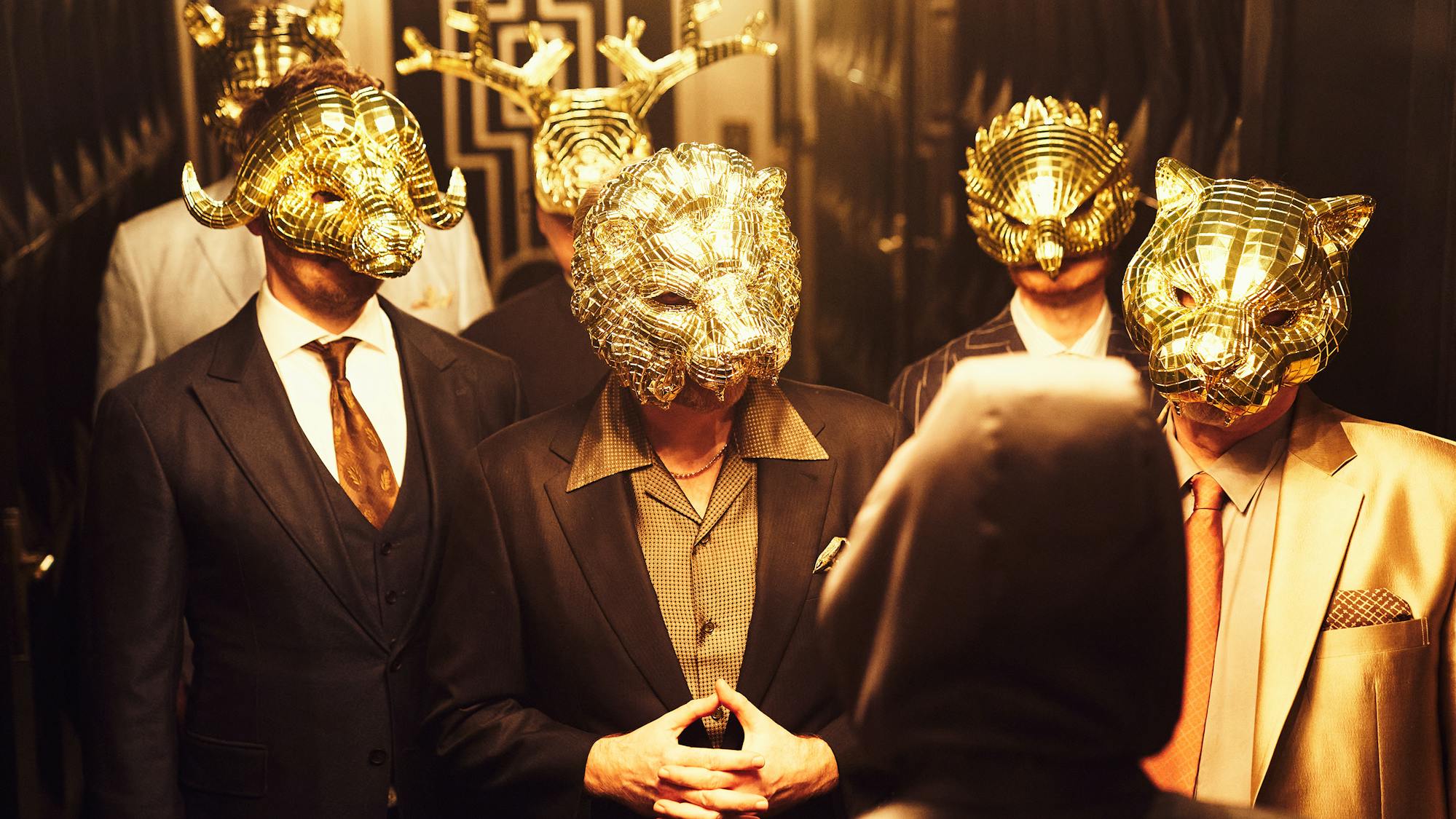
By the time the masked V.I.P.s arrive, viewers have become accustomed to the dress code here. Players wear teal tracksuits and white slip-on shoes around the clock; during games, they resemble children, running across a field or squatting on the floor. Workers wear bright pink jumpsuits and mesh masks with a circle, triangle, or square on them, indicating their rank and role; these characters are faceless, meant to be interchangeable and dispensable. The consistency of costuming over the course of the show lends familiarity to the world of the games. But no matter how tightly managed this manufactured universe is, the messiness of reality seeps in, becoming obvious in the soiled, bloodied shirts and shoes of the players — and their dwindling numbers. By Episode 7, the players have formed alliances, even real friendships. Numbers 001 and 456. Numbers 067 and 240. No matter how much the game’s overlords attempt to squash players’ individuality by instituting uniforms and stripping away their names, humanity peeks through in the darkest moments.
Then come the V.I.P.s in their opulent wares and golden masks, each a different animal’s face. All don suits of varying shades and styles and, once they’ve gotten comfortable, distinctive embroidered robes. These characters are allowed their individuality, yet still bear the privilege of anonymity. Their dark, rich garments pose a stark contrast to the teal and pink we’ve grown accustomed to. For the first time, we see how the spectators of the games dress and, through that, who they are. The decisions behind Episode 7’s costumes create a world of contrasts: opulence versus scarcity, spectator versus spectacle, haves versus have-nots. In so few words, we’re left with a better picture of how the games work — and for whom.
Let the Show Begin
Production Design
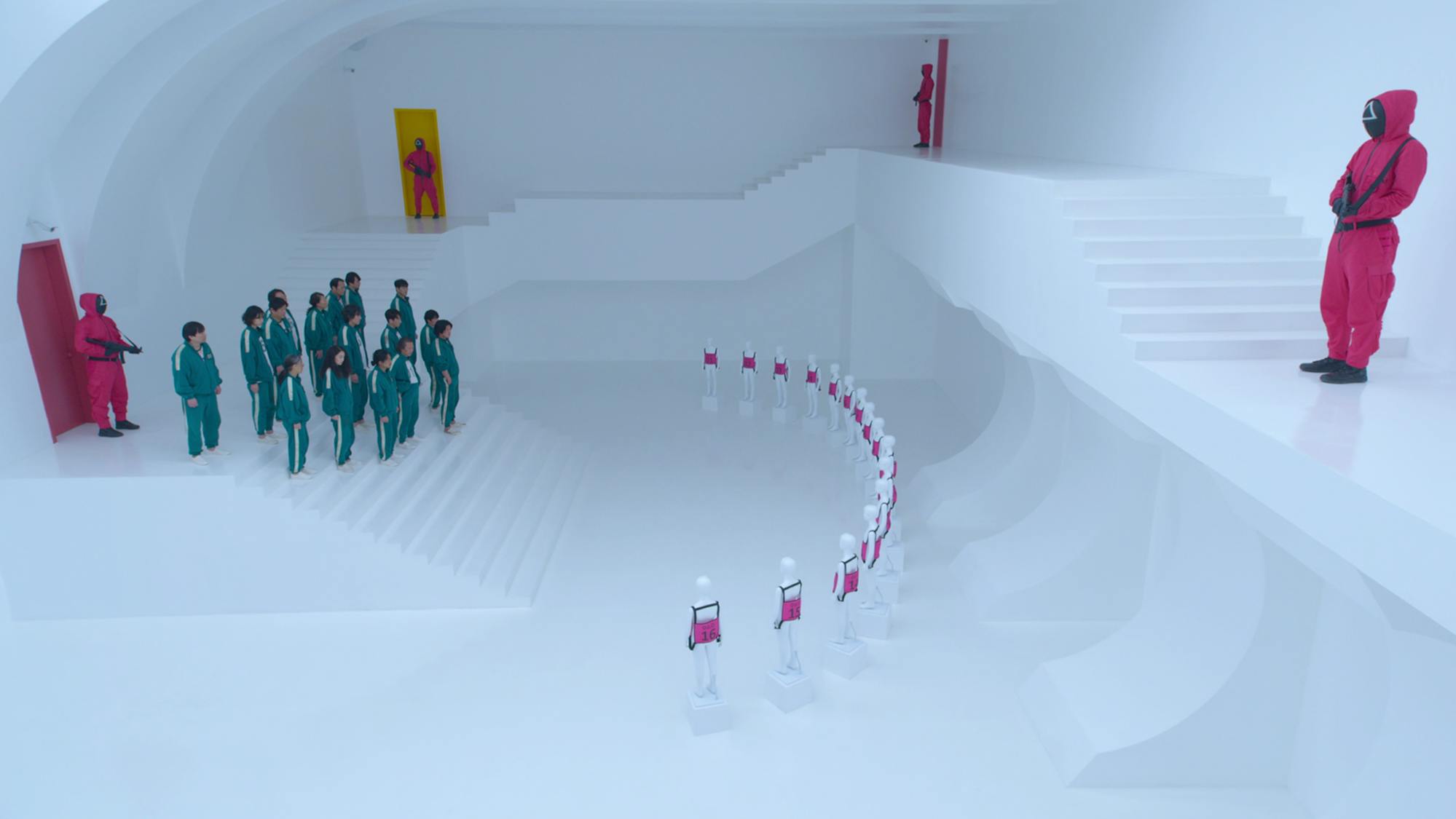
The spaces in the world of Squid Game speak volumes about this juxtaposition of player and spectator. While private V.I.P. quarters are covered in wall-to-ceiling murals, players are introduced to this episode’s game in a painfully white room. The only color is that of the jerseys indicating the order in which they’ll play; in other words, the order in which they might live — or die. This is the powerful effect of Squid Game’s production design.
Each game is set in a massive space intended to evoke nostalgia — a cornfield, a playground, a South Korean neighborhood with alleyways — making the reality of the life-or-death game at hand all the more brutal. The production design team makes brilliant use of primary colors for the dreamlike sets, creating a complete contrast to the rocky, remote island on which the clandestine games take place.
With the V.I.P.s’ arrival, we begin to comprehend the spectacle of it all. The room where they sit is fashioned after a tropical jungle. Cheetah-print couches, monstera plants, and palm trees are everywhere — even the waiters wear leaf-shaped masks. People stand bodypainted and naked, serving as decor; one such worker is positioned as an ottoman for a V.I.P. to rest his feet. These men enjoy the ambiance, the lush fabrics, the endless champagne served in gold-hued flutes. The room is a theater, with a gold frame outlining the set where the final 16 players fight for their lives. When a pair of heavy green velvet curtains opens to reveal the game, it’s a scene that, complete with colorful string lights, resembles a circus tent. Players are forced to make their way across a bridge suspended hundreds of feet in the air, choosing carefully which of two glass tiles to step on along the way. One of them can sustain the weight of two players, the other shatters under the weight of just one. The masked leader hovers over a small model of the game, marking each move as it happens, like on a chess board. On both large and small scale, the players become literal pawns.
Illusions of Grandeur
Visual Effects
With every challenge, the rules of Squid Game stay consistent. A player wins, they live. A player loses, they die. Which is to say — spoiler alert — hundreds of people have been shot dead since Episode 1. Game five, the glass bridge, lends a visually striking angle to this horrifying predicament. As unlucky participants discover that they’ve stepped on the wrong tile, fragile glass cracks and drops them hundreds of feet to the ground. Some are shown falling slowly, as glass flies around like confetti. Others instantly hit the ground with a shudder-inducing thud. The visual effects team uses glass reflections and colorful lighting to make it all resemble a high-wire circus act. Whereas most previous games are brightly lit, like a middle school gymnasium, this one is dark — at one point the lights are even shut off — leaving viewers to make the most of what we do see.
Then, once the winning players reach the other side of the bridge, every remaining glass tile shatters in stunning fashion, a feat of practical visual effects. The game quite literally explodes, leaving behind all traces of the agony and death it has caused, but not before sending shards of glass flying everywhere in poetically slow motion against the sonic backdrop of an energetic drum set. It lasts nearly a whole minute, with the sound coming to a high-pitched screech before jolting back into real time. Visually, this moment is unlike any other in the series, a marriage of artistry and entertainment.
On the Edge of Your Seat
Sound Design
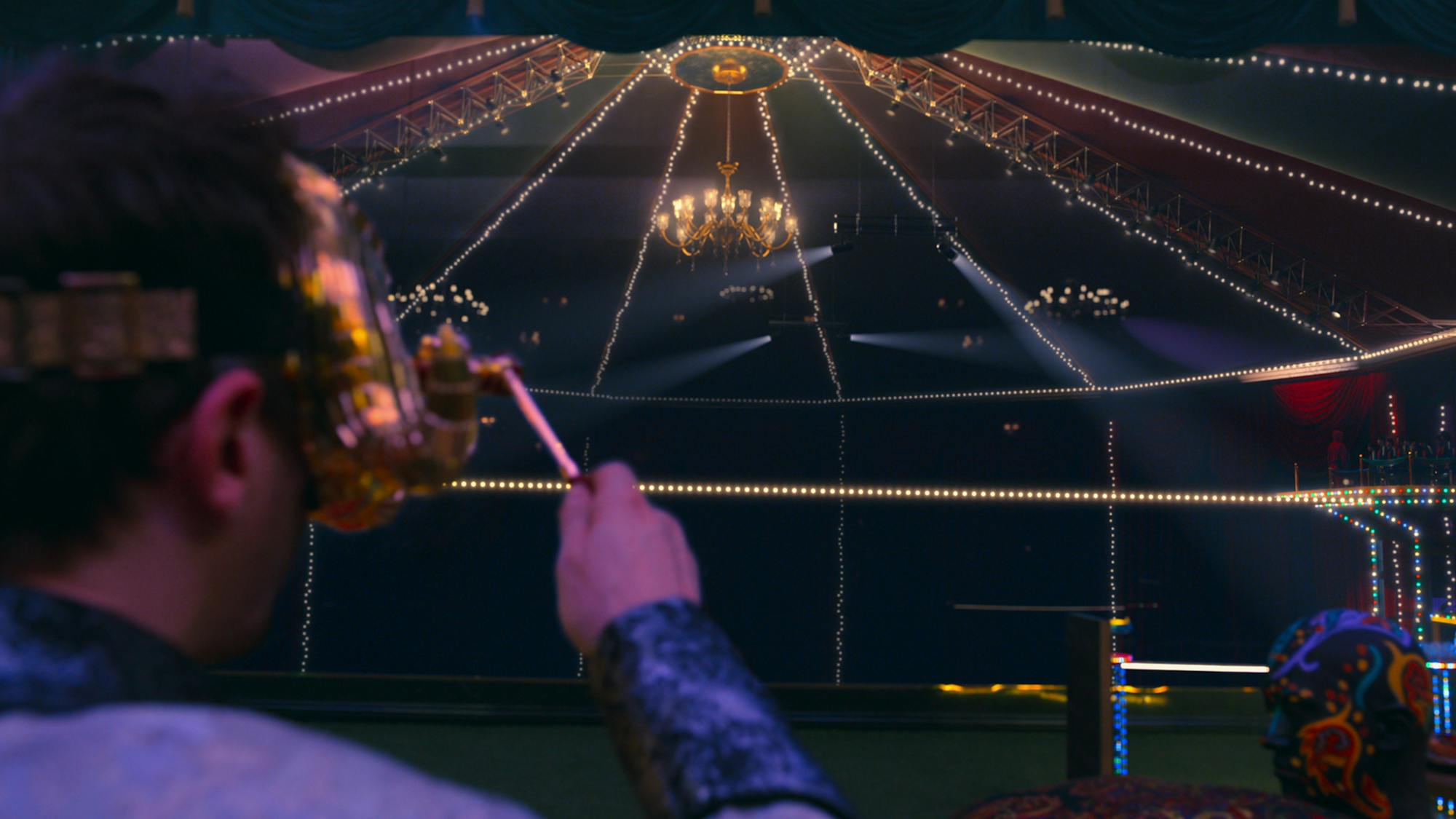
As we settle into the perspective of the V.I.P.s at the start of the episode, we’re enveloped by familiar carnival music. We’re in for a show, as we have been for six episodes already, but now, we’re painfully aware of what it means to be a spectator. As the game gets underway, so do a series of heart-pounding musical cues, making it impossible to look away. It’s all part of Dong-hyuk’s plan to make this gruesome challenge enticing to watch. By the game’s end, the destruction of the bridge, with its pounding drums and screeches, feels like the climax of a performance. It’s yet another way in which viewers, like the V.I.P.s, are witness to this spectacle. For a moment, we don’t see jaded players at the end of their rope; we see performers at the peak of their game.
Squid Game’s enduring popularity might come down to its commentary on capitalism, its intense stakes, and its singular world-building. Ultimately, though, it achieves all of this through the invisible magic of filmmaking. Costume design, production design, visual effects, and sound all make up a sandbox for brilliant actors like Lee Jung-jae, Jung Ho-yeon, and Park Hae-soo to play in. They’re the reason we’re drawn in, gripped until the bitter end.
